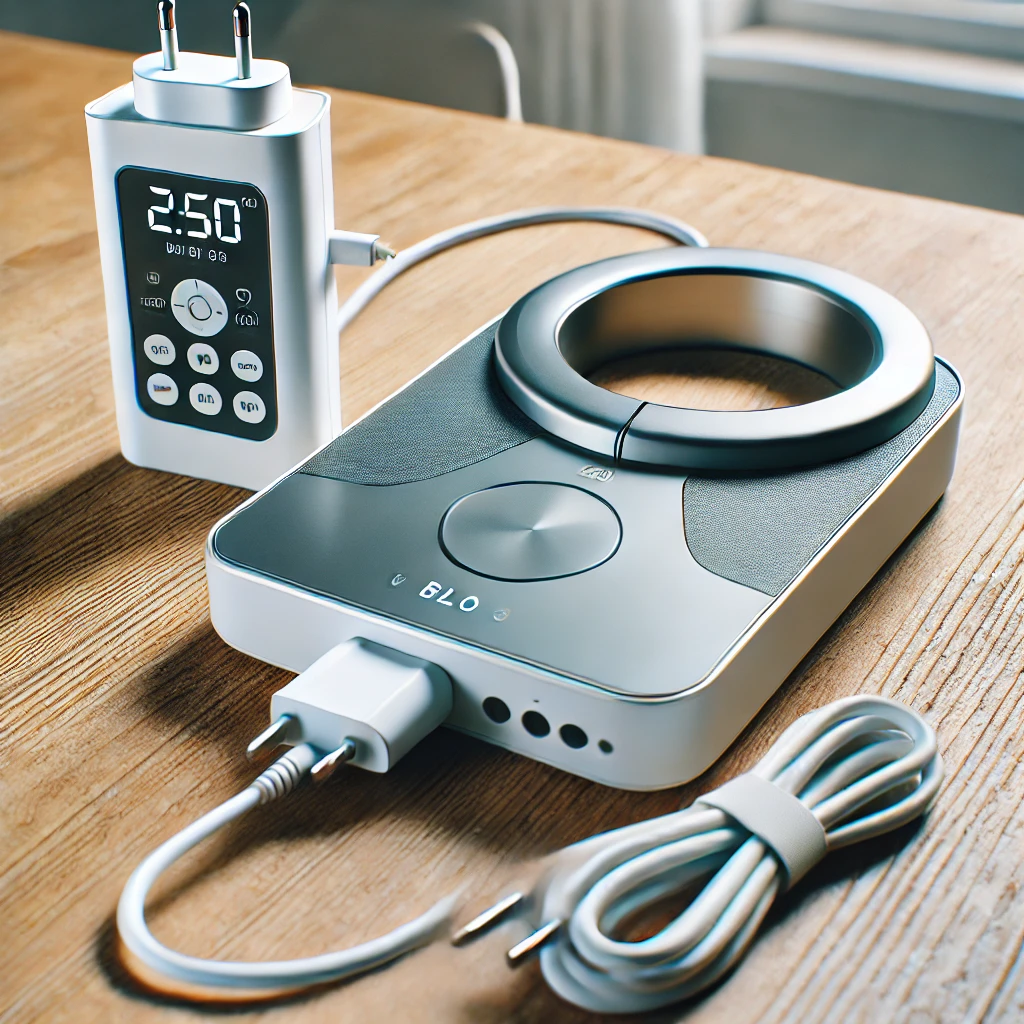Technology
vBloc Device Won’t Charge: Troubleshooting Guide and Solutions

If your vBloc device won’t charge, it can be frustrating and concerning. The vBloc device is designed to help regulate hunger signals and aid weight loss, making it an important part of many users’ health routines. This guide will help you understand the potential reasons why your vBloc device won’t charge and provide practical solutions to help get it back to working condition. We’ll cover everything from basic troubleshooting steps to more advanced diagnostic tips.
Understanding the vBloc Device
The vBloc device is a revolutionary weight management tool that works by delivering electrical pulses to the vagus nerve. These pulses help control hunger signals, thereby aiding weight loss. The device is implanted within the body, and patients use an external charger to ensure the battery is functioning properly. Like any electronic device, the vBloc charger may encounter issues that prevent it from charging effectively. Let’s delve into the most common reasons why your vBloc device might not be charging.
Common Reasons Why the vBloc Device Won’t Charge
1. Faulty Charger or Damaged Cable
One of the most common reasons why your vBloc device may not be charging is due to a faulty charger or damaged cable. Over time, wear and tear can cause the charging cable to fray or the charger to stop functioning correctly. The connection points of the charger may become worn out, causing an inability to establish a solid connection to the power source.
Solution: Inspect the charging cable for visible signs of wear, such as fraying or bent connectors. If you find any issues, it might be time to replace the charger or cable. It’s also important to use the original charger provided by the manufacturer to ensure compatibility.
2. Improper Charger Alignment
The external charger for the vBloc device relies on magnetic coupling to connect and charge the implanted unit. If the charger is not properly aligned, it may not establish a connection, preventing the device from charging.
Solution: Make sure that the charger is correctly aligned with the implanted vBloc device. You may need to reposition the charger several times until you hear the indicator sound that signifies proper alignment. The manufacturer usually provides specific instructions for correct alignment, so refer to the user manual if you are unsure.
3. Low Battery Level of the External Charger
The external charging device itself needs to be sufficiently charged to function properly. If the external charger’s battery is low, it will not be able to deliver a proper charge to the implanted vBloc device.
Solution: Ensure that the external charger is fully charged before attempting to use it. Connect it to a power source and allow it to charge until it reaches full capacity. Once it is fully charged, attempt to charge the vBloc device again.
4. Environmental Interference
Another potential issue is interference caused by environmental factors. Devices such as cell phones, laptops, or even microwaves can disrupt the charging process if they are in close proximity to the vBloc charger.
Solution: Try moving away from other electronic devices when charging your vBloc device. This will help minimize potential interference and allow the charger to establish a proper connection with the implanted unit.
5. Faulty Implant Connection
If the charging issues persist, it may be related to a problem with the implanted unit itself. The implant may have a faulty connection or require servicing.
Solution: If you have tried all the previous troubleshooting steps and the vBloc device still won’t charge, it is important to consult your healthcare provider. They can perform a diagnostic check to determine if there is an issue with the implanted unit and recommend appropriate steps for repair or replacement.
6. Software Issues
Sometimes, software issues can prevent your vBloc device from charging properly. If the software that controls the implant becomes outdated or malfunctions, it can create problems for the charging process.
Solution: Check for any updates to the software associated with the vBloc device. Your healthcare provider or the device manufacturer may provide software updates that can help resolve charging issues. If you are not sure how to update the software, contact the manufacturer’s customer service for assistance.
How to Properly Maintain the vBloc Device and Charger
To prevent charging issues from occurring, it’s important to properly maintain both the vBloc device and its charger. Here are some maintenance tips that can help keep your device in good working condition:
- Use the Original Charger: Always use the original charger and cables provided by the manufacturer. Using third-party chargers can lead to compatibility issues and may damage the device.
- Inspect Cables and Connectors Regularly: Periodically inspect the charging cables and connectors for any signs of wear or damage. Replace them immediately if you notice any issues.
- Avoid Exposure to Moisture: Both the charger and cables should be kept away from moisture to prevent damage. Exposure to water can cause corrosion, making it difficult for the device to charge properly.
- Store the Charger Properly: When not in use, store the charger in a safe and dry place to prevent it from becoming damaged. Ensure that the charging cables are neatly wrapped and not bent or tangled.
When to Contact Your Healthcare Provider
If you have tried all of the troubleshooting steps and the vBloc device still won’t charge, it is essential to contact your healthcare provider. They have the expertise and tools to diagnose the issue properly. Here are some situations where you should seek professional help:
- Persistent Charging Problems: If your device has not charged despite trying all troubleshooting steps, this may indicate a more serious problem that requires medical attention.
- Device Malfunction: If the vBloc device shows any signs of malfunction, such as not responding or failing to control hunger signals as it should, it is important to have it checked by a professional.
- Physical Discomfort: If you experience any physical discomfort or pain near the implantation site while attempting to charge the device, stop immediately and contact your healthcare provider.
Frequently Asked Questions (FAQs)
1. How often should I charge my vBloc device?
The charging frequency of the vBloc device will depend on your usage and the specific recommendations given by your healthcare provider. Generally, users are instructed to charge their device once or twice a week to ensure optimal functionality. Always follow the instructions provided by your healthcare professional regarding charging frequency.
2. Can I use a wireless charger for my vBloc device?
The vBloc device uses a specialized external charger designed for magnetic coupling with the implant. It is important to use only the charger provided by the manufacturer and follow the instructions for proper alignment and usage. Attempting to use a third-party or wireless charger not designed for the vBloc device can result in ineffective charging and even damage.
3. How long does it take to charge the vBloc device?
The charging time for the vBloc device can vary depending on the battery level of both the external charger and the implanted unit. Typically, it takes about 60 to 90 minutes for a full charge. If your device is taking significantly longer to charge or is not reaching full capacity, this could indicate a problem that needs troubleshooting.
4. Is it normal for the charger to become warm during charging?
Yes, it is normal for the external charger to become warm during the charging process. However, if the charger becomes excessively hot or if you notice any unusual odors, stop charging and contact the manufacturer or your healthcare provider for further guidance.
Final Thoughts
The vBloc device is an effective tool for weight management, and ensuring it remains charged and operational is essential for achieving the best results. If your vBloc device won’t charge, the problem could stem from various causes, including a faulty charger, improper alignment, environmental interference, or a problem with the implant itself. By following the troubleshooting steps outlined in this guide, you can address the most common charging issues and restore your device’s functionality.
If you continue to experience difficulties with charging your vBloc device, it’s important to reach out to your healthcare provider for further assistance. They can help diagnose the problem and take the appropriate actions to get your vBloc device back on track. With the right care and maintenance, your vBloc device can continue to support your health journey effectively.
Remember, always follow the manufacturer’s guidelines and consult a healthcare professional whenever you encounter issues beyond your control. A well-maintained vBloc device can make a significant difference in your weight management efforts, so taking care of it should always be a priority.
